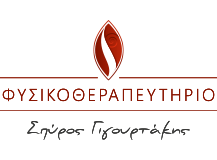
Οι σύγχρονες κατευθυντήριες γραμμές (National Institute for health and Care Excellence) προτείνουν ασκήσεις ενδυνάμωσης και διάτασης σε ασθενείς που πάσχουν από ρευματοειδή αρθρίτιδα άκρας χειρός.
Rheumatoid arthritis is a chronic autoimmune disease affecting the synovial joints and other systems of the body. There is no cure and it is generally managed by pharmacological, surgical or complementary therapy interventions.
Pharmacological management focuses on improving symptoms or controlling disease activity and joint damage. However, unpredictable exacerbations, lack of adherence to medication or uncertainty in predicting who might develop long-term complications may lead to varied levels of disability. Of the nonpharmacological treatments (which commonly include joint protection advice, exercises, splints, assistive devices and physical therapy modalities), exercises are designed to maintain or improve people’s range of movements and muscle strength, thereby reducing dependence and long-term disability.
Hand and wrist problems
Joints of the hands and wrists are frequently affected,resulting in a reduced range of finger and wrist movements, muscle weakness and joint deformities. Joint flexibility and strengthening exercises are often prescribed to maintain or improve finger movement range and grip strength.The National Institute for Health and Care Excellence (NICE) guideline, updated in December 2015, tells appropriately experienced practitioners to consider tailored strengthening and stretching hand exercise programmes for people with pain and dysfunction of the hands and wrists if
- they are not on a drug regimen for rheumatoid arthritis, or
- have been on a stable drug regimen for rheumatoidarthritis for at least three months
These recommendations were based on findings of the Strengthening and Stretching for Rheumatoid Arthritis of the Hand (SARAH) randomised controlled trial.
The SARAH trial
The SARAH programme was compared with usual care (joint protection, splinting and assistive devices in a large clinical trial of 490 people who reported pain and hand function problems due to rheumatoid arthritis, and were on a stable drug regimen for a minimum of three months. People who received the SARAH programme were followed up at four and 12 months. Improvements reported in overall hand function at both time points were twofold when compared to people who received the usual care. The programme was also found to be clinically safe and was cost-effective.
The SARAH programme
The SARAH programme is a tailored 12-week progressive hand-and-arm exercise regime developed for people who have reduced hand function due to rheumatoid arthritis. It includes a combination of seven flexibility exercises for wrist, fingers and the whole upper limb, and four strengthening exercises for hands and wrists. A key objective is to encourage patients to exercise regularly at home for the 12-week period and beyond, to maintain or improve hand function and reduce disability. In order to incorporate SARAH exercise in people’s daily routine, the programme is integrated with evidence-based behavioural support strategies, such as an exercise diary and a personal exercise plan.The diary features a checklist for patients to tick each time they complete the exercises, including the number of repetitions and loads used.
The exercise plan is used to involve patients in setting their own goals relevant to hand function, setting their exercise goal, assessing their confidence in completingthe SARAH programme as prescribed and action planning (when and where to do the exercises and complete the diary) to achieve their goal. If patients had difficulty incompleting the exercises or filling the diary, barriers and facilitating factors were discussed with them to explore possible solutions, including revisions in goals and the exercise plan.The programme incorporates six patient-therapist faceto- face sessions over 12 weeks. The first session covers routine assessment, along with patient education on joint protection, and use of splints or assistive devices. The subsequent sessions include exercise training, progression or regression of exercises and review of the exercise plan.
Dr Cynthia Srikesavan is a post-doctoral research assistants in physiotherapy and Dr Esther Williamson is deputy director at the Centre for Rehabilitation Research, University of Oxford

